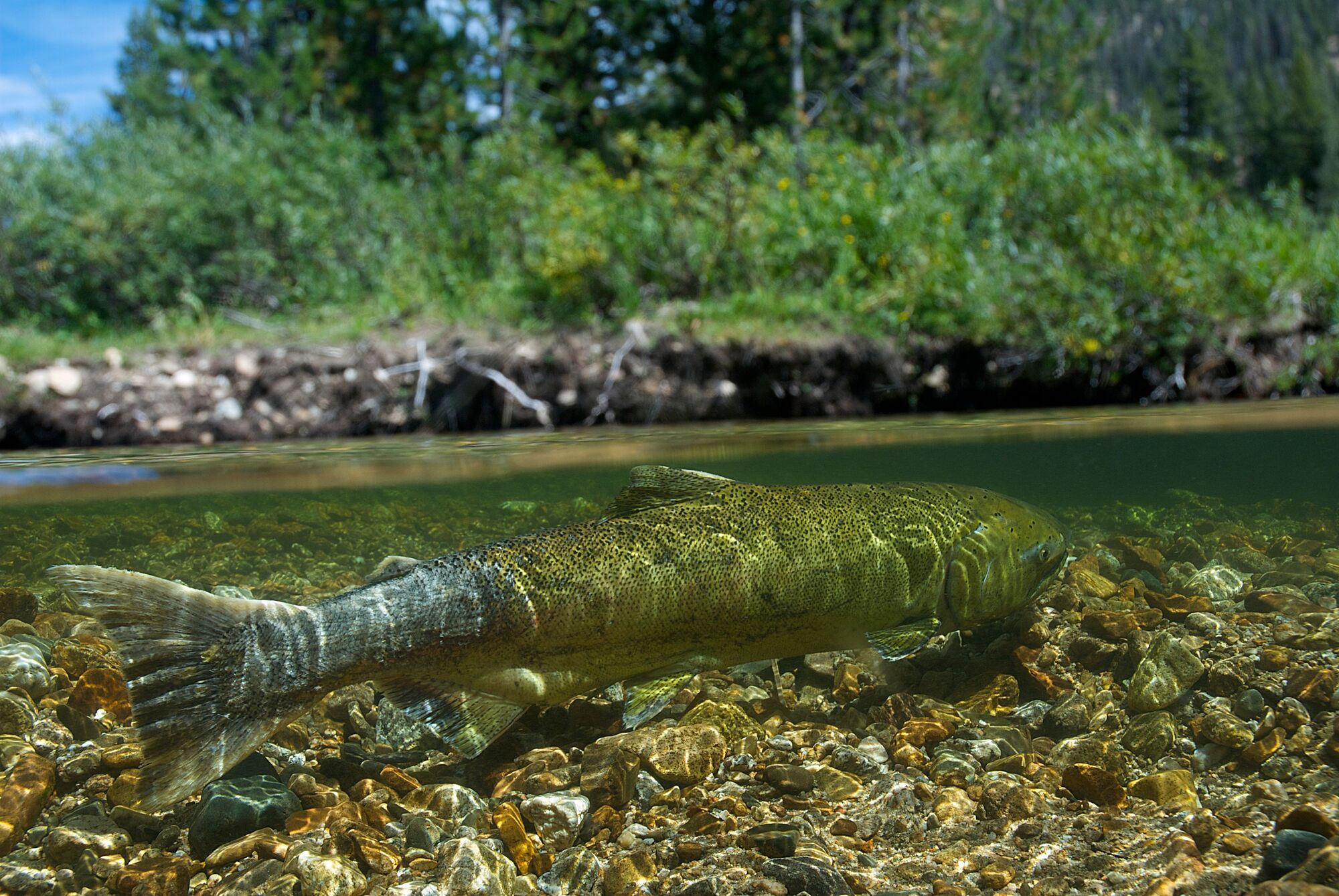Quinault Nation Calls for Dam Removal on Skookumchuck River to Save Salmon
Fish blocking dam’s purpose will end with closure of the Centralia Coal Plant in 2025
Contact
The Quinault Indian Nation today filed a petition with the Washington Department of Fish and Wildlife (WDFW) calling for removal of the aging Skookumchuck Dam. The dam was built without any upstream fish passage, blocking access to an estimated 21 miles of spawning habitat for several species of salmon in the Skookumchuck River, including a run of spring Chinook currently so decimated that it is under consideration for listing under the federal Endangered Species Act.
The Skookumchuck Dam violates state law that prohibits blockage of fish passage. WDFW is authorized, under the law, to require its removal, particularly now that its original purpose to provide water for the coal plant is coming to an end.
“We have a once-in-a-generation chance to make a huge improvement in conditions for salmon and the health of the river. Dam removal has proven over and over again to be one of the fastest and best ways to bring salmon back from the brink of extinction and put them on a road to recovery.” said Quinault Indian Nation Councilman John Bryson Jr. “For the State of Washington, it’s a chance to do something big to back up its words to save salmon and deliver on treaty rights.”
As the 2022 State of Salmon report says, “Salmon continue to struggle in Washington. Most species are in crisis or not keeping pace with recovery goals.” On the Skookumchuck River, the dam and reservoir have drowned and blocked access to historic spawning habitat and altered the natural flow of the river. Before construction of the dam, it is estimated that 1,800 coho, 500 spring Chinook, 371 fall Chinook spawned upstream of where the dam sits today.
“Salmon were already declining due to habitat loss from intensive logging and other land uses so when the dam came along and cut off access to prime spawning grounds, it was a final blow to bringing them back to self-sustaining levels,” said Larry Lestelle, a consulting fish biologist with the Quinault Indian Nation. “If we free the river, restoring access to spawning grounds and returning the river to a more natural flow regime, we should see a significant boost in abundance as shown with other dam removals in Washington State and elsewhere.”
Ironically, the agency charged with protecting Washington State’s land, air, water and wildlife, the Dept. of Ecology, is perpetuating the illegal Skookumchuck Dam. In 2021, the agency approved a water right for the state’s second largest water bank, 26,631 acre-feet per year, to the owner of the dam and power plant, Canada-based TransAlta.
Based on a legal requirement, the largest amount the Dept. of Ecology should have granted the company’s water bank is 21,430 acre-feet annually, the average of the two highest years of the coal plant’s water use in the preceding five years. Over its 50-year operating life, the facility’s average annual water use was approximately 20,000 acre-feet.
“TransAlta owns the dam. The company does not own the river. The river is a public resource and with the purpose of the dam coming to an end we have a tremendous opportunity to enhance the resilience of the river ecosystem for the benefit of people and salmon,” said Janette Brimmer, a senior attorney at Earthjustice. “Instead, the TransAlta water bank will perpetuate the significant harms from the dam while over-promising water that is getting more and more scarce in the face of climate change.”
As climate change drives longer, hotter summers, higher river temperatures and more drought, salmon increasingly face deadly river conditions. For salmon to survive and thrive moving forward they need access to more spawning habitat and naturally flowing rivers.
In approving the water bank, the Dept. of Ecology failed to consider the impact of its decision on salmon and treaty rights, failed to consider how else that water might be used for fish and public benefits, and in the process, improperly approved an amount of water much higher than was historically used by TransAlta.
The Quinault Indian Nation is calling for dam removal as the only Tribe with treaty rights in the Skookumchuck River and the larger Chehalis River. In signing the Treaty of Olympia in 1856, the Tribe reserved its right to take fish at its “usual and accustomed fishing grounds and stations” among other rights, in exchange for ceding vast tracts of land it historically roamed freely.
The Skookumchuck River is a major tributary of the Chehalis River, the largest river contained entirely within the state of Washington, where more than $100 million of state funds has already been spent on an ambitious habitat restoration plan for salmon and other aquatic species. The plan is part of the Chehalis Basin Strategy, a state initiative led by the Dept. of Ecology.

Additional Resources
About Earthjustice
Earthjustice is the premier nonprofit environmental law organization. We wield the power of law and the strength of partnership to protect people's health, to preserve magnificent places and wildlife, to advance clean energy, and to combat climate change. We are here because the earth needs a good lawyer.